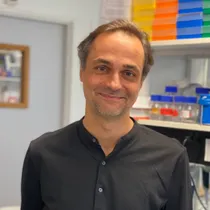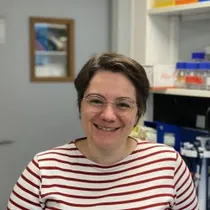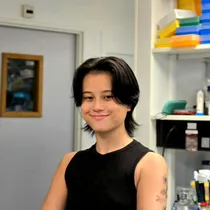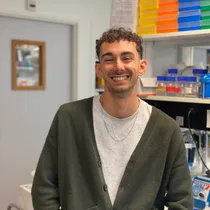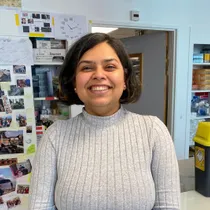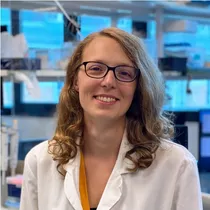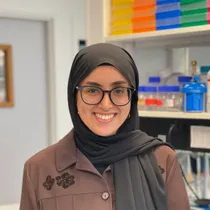Presentation
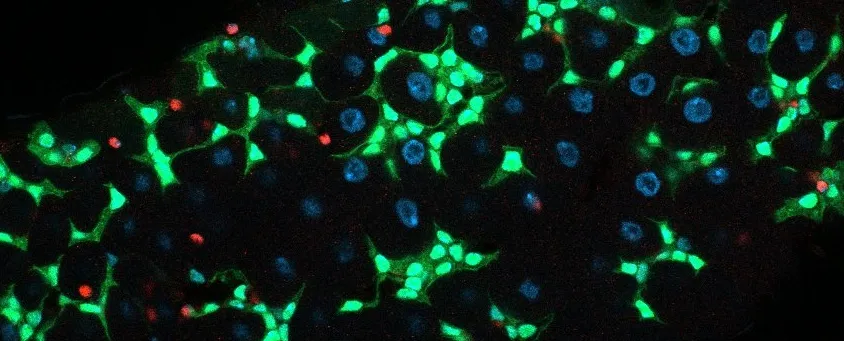
Stem cells are essential for tissue and organ development, as well as their maintenance throughout life. They are characterized by their ability to self-renew and as well as to produce differentiated progeny. Understanding the balance between these dual properties is an important aim of regenerative medicine and has crucial implications for cancer biology. Our group aims to uncover the mechanisms that govern these processes and their collective role in promoting tissue homeostasis.
Our Key Research Questions
The Bardin lab work addresses three fundamental questions:
- How is self-renewal and differentiation orchestrated?
- What are the causes and consequences of loss of stem cell genome integrity?
- Which mechanisms integrate homeostasis at the tissue level?
Drosophila melanogaster Midgut: Our Model System
To address these questions, we use the Drosophila melanogaster midgut as a simplified yet powerful model, characterized by the availability of an extensive range of genetics tools facilitating its study. The midgut contains around 2,000 multipotent intestinal stem cells (ISCs) that give rise to two differentiated cell types required for intestinal function: enterocytes (ECs) and enteroendocrine cells (EEs). While these differentiated cells are replaced approximately once a week in healthy animals, they can be rapidly regenerated upon bacterial infection or chemical treatment. Thus, the Drosophila midgut is an efficient and simple system for modelling mammalian tissues such as the intestine, lung or skin that need to regenerate in response to environmental stimuli.
1. Regulation of Self-Renewal and Differentiation
To gain insight into self-renewal and differentiation controls of ISCs, we have used both unbiased genetic screen and candidate gene approaches that identified several regulators or lineage decisions (Bardin et al 2010, Development ; Perdigoto et al 2011, Development ; Sallé et al 2017, EMBO J).
Our subsequent work highlighted the role of chromatin remodeling in stem cell proliferation, revealing critical remodelers conserved in mammals (Andriatsilavo et al 2018, PLoS Genet ; Gervais et al 2019, Dev Cell).
To further explore gene and cell-specific transitions, we performed mapping of chromatin associated factors using a statistical modeling approach, which enabled us to characterize genome-wide chromatin state transitions associated with differentiation and lineage priming (Josserand et al 2023, Dev Cell).

Figure 2. Chromatin state transitions between ISCs and ECs, ISCs and EEs. Boxes represent the proportion of genes marked by each chromatin state. The flows represent the proportion of genes undergoing chromatin state transitions from one state to another between cell types.
We are now investigating both cell-intrinsic and extrinsic factors, such as the diet and microbiome, that may impact the function of chromatin remodelers and gene expression.
2. Causes and Consequences of Genome Integrity Loss
Past work from the lab demonstrated that ISCs acquire frequent spontaneous mutations during aging, with easily identifiable phenotypic alteration including frequent mutations in the tumor suppressor gene Notch which drive tumor formation (Siudeja et al 2015, Cell Stem Cell).

Figure 3. During aging, spontaneous mutations arise in adult stem cells. This leads to the frequent inactivation of the tumor suppressor gene, Notch, promoting neoplasia formation (in red) in 10% of aged male flies.
Using this model, we have made several key discoveries:
Clonal analysis of stem cell mutations highlighted the existence of drivers and passengers of Notch inactivation and showed that these fly tumors have a similar mutation burden to some human cancers (Riddiford et al 2021, Genome Res).
Whole genome sequencing (WGS) analysis of clonally expanded tissue revealed that somatic transposable element mobility alters stem cell genomes (Siudeja, van den Beek et al 2021, EMBO J).
Loss of heterozygosity, a process integral to human familial cancers, was shown to be driver by mitotic recombination, depending on double Holiday Junction resolution (Al Zouabi et al 2023, Cell Rep).
Currently, our focus lies on studying the early effects of spontaneous disruptions of genome integrity, and identifying the buffering mechanisms that may mitigate these changes.
3. What mechanisms integrate homeostasis at the tissue level?
Tissue homeostasis depends on a delicate balance between stem cell self-renewal and differentiation. To investigate factors that may impact this balance, we investigated replication stress as a potential vulnerability of ISCs upon challenge. Our recent findings revealed that replication stress due to altered nucleotide pools can be buffered through gap junction-mediated nucleotide exchange between cells in larval wing disc progenitors. However, ISCs lack gap junction, preventing similar mechanisms which may predispose the midgut to replication stress (Boumard, Le Meur et al, accepted in principle, Dev Cell).

Figure 4. Model of nucleotide sharing through gap junctions in different tissues, buffering replication stress in the wing disc progenitor cells but not in midgut ISCs.
Building on these findings, we are now exploring the role of a broader range of metabolic sharing in maintaining tissue homeostasis.

Bardin Lab, October 2024.











